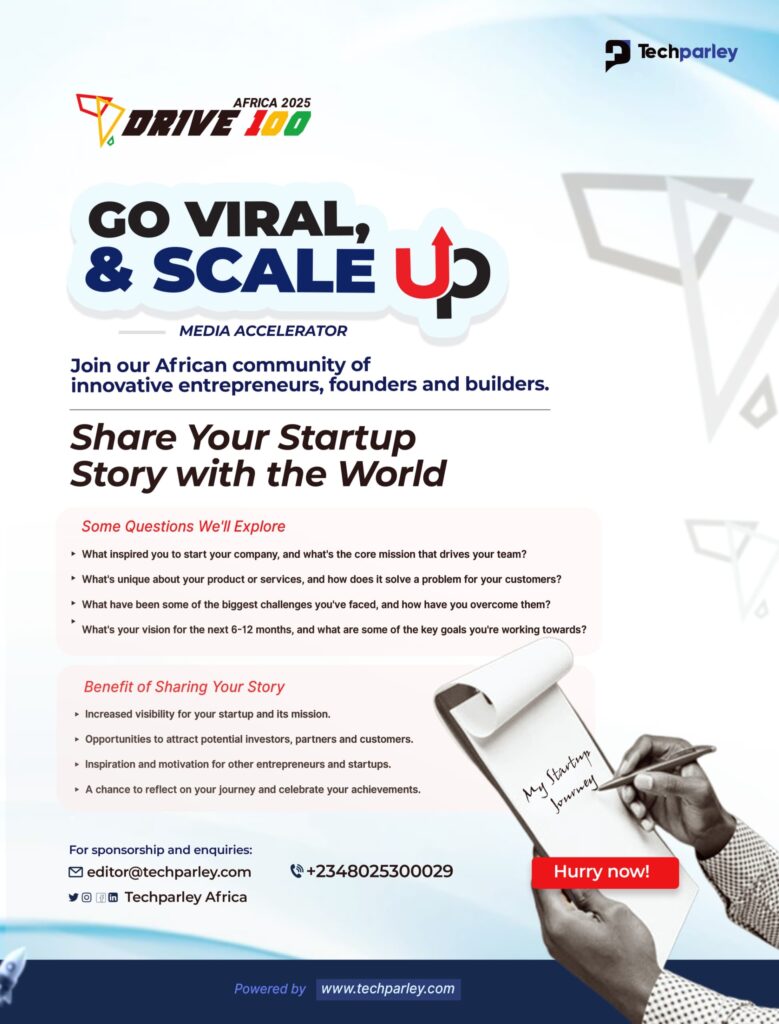Nigeria’s Rana Energy, a rising star in the continent’s clean-tech sector, has raised $3 million in pre-seed funding to scale its artificial intelligence (AI)-powered clean energy solutions across Africa.
Founded in 2023 by engineers Abraham Mohammed and Mubarak Popoola, the company operates a “Clean Energy-as-a-Service” model that provides solar and battery systems to businesses on a subscription basis.
The funding comprises $500,000 in venture equity from investors such as Techstars, EchoVC Eco, and MAX co-founders Chinedu Azodoh and Tayo Bamiduro, alongside a $2.5 million local currency green debt facility backed by FSDH Asset Management and arranged by Optimum Global.
Rana Energy plans to grow its asset base to 10 megawatts (MW) over the next year and expand into Ghana and Zambia, building on its mission to make clean, affordable power accessible across Africa’s commercial and industrial sectors.
What Is Rana Energy?
Founded in Lagos in 2023, Rana Energy was established to bridge the gap between Africa’s rising energy demand and the continent’s struggle with unreliable power infrastructure.
The company integrates artificial intelligence into energy generation, storage, and distribution, allowing it to predict consumption patterns, automate system maintenance, and optimize energy usage for cost efficiency.
This technology-driven approach is designed to overcome challenges that have long undermined renewable energy adoption in Africa, chiefly poor grid connectivity, inconsistent weather data, and inefficient energy storage systems.
Co-founder and CEO Abraham Mohammed explained that the company’s goal is to “prove that sub-1 MW clean energy systems, when aggregated, can attract institutional capital, deliver strong returns, and drive measurable impact.”
By aggregating smaller energy projects into a unified, data-driven network, Rana Energy can achieve the scale and reliability required to attract large investors while still reaching underserved markets.
What Services It Offers and For Whom
Rana Energy operates a Clean Energy-as-a-Service (CEaaS) business model, which allows organizations to access renewable energy without the burden of owning or maintaining infrastructure.
Businesses subscribe to solar power and battery storage systems based on their energy needs, and Rana takes care of installation, operation, and maintenance.
This flexible model removes the high upfront costs typically associated with renewable energy and makes it possible for clients to enjoy stable electricity at predictable, lower prices.
The company’s target clients include industrial facilities, hospitals, supermarkets, and battery swap stations, as well as entities that require uninterrupted power to sustain daily operations.
By replacing diesel generators with AI-optimized solar systems, Rana Energy not only helps businesses cut carbon emissions but also reduces long-term energy expenses.
Its technology also monitors system performance in real-time, alerting engineers before faults occur and ensuring consistent energy delivery.
Who Is Investing in Rana Energy and Why
Rana Energy’s funding round attracted a mix of institutional investors, venture capitalists, and angel investors who see potential in the company’s blend of AI, clean energy, and innovative financing.
Climate-focused investor EchoVC Eco led the round, recognizing the startup’s model as a pioneering approach to Africa’s energy transition.
“Rana represents everything we look for in climate infrastructure: exceptional founders solving a massive problem with breakthrough technology and innovative financing,” said Eghosa Omoigui, managing partner at EchoVC Eco.
The participation of Techstars, one of the world’s leading accelerator networks, underscores international confidence in Rana’s scalability and market potential.
Meanwhile, the involvement of MAX co-founders, Chinedu Azodoh and Tayo Bamiduro, reflects growing collaboration between Nigeria’s established tech leaders and emerging climate-tech startups.
Their experience in mobility and distributed infrastructure offers strategic value to Rana’s next phase of growth.
In addition to equity investors, the startup secured a $2.5 million green debt facility arranged by Optimum Global and backed by FSDH Asset Management.
This marks one of the few cases where local financial institutions have backed early-stage renewable projects in Nigeria, speaking of growing confidence in the profitability and impact of clean energy investments.
Rana’s Plans for the New Fund
With its new funding, Rana Energy plans to expand its clean energy asset base to 10 MW within the next 12 months. This expansion will significantly boost the company’s capacity to serve larger clients and diversify its project portfolio.
Rana also aims to strengthen its AI-powered platform, improving predictive analytics for energy demand, system optimization, and battery lifespan management.
Beyond Nigeria, the startup plans to enter new regional markets, starting with Ghana and Zambia, two countries that have both demonstrated growing demand for decentralized clean energy.
Rana’s cross-border expansion strategy involves partnering with local enterprises and government agencies to integrate renewable solutions into existing infrastructure, from commercial complexes to industrial parks.
Doing so, the company hopes to create scalable, replicable models that can accelerate Africa’s broader energy transition.
Why It Matters
Rana Energy’s rise comes at a time when Africa faces a severe energy access crisis. According to the International Energy Agency (IEA), more than 600 million Africans, roughly 43 percent of the continent’s population, still lack access to reliable electricity.
For those connected to the grid, power outages and heavy dependence on diesel generators significantly increase operational costs and carbon emissions.
Rana’s approach, blending AI-driven energy management with mixed financing models, offers a blueprint for addressing both the financial and technical barriers to clean energy adoption.
As Mohammed noted, “By blending venture equity with structured green debt financing, we have built a replicable model for Africa’s energy transition.”
Experts estimate that Africa’s clean energy market could unlock billions of dollars in economic value by 2030 if businesses can access affordable, reliable alternatives to fossil fuels.
EchoVC’s Omoigui emphasized that Rana’s technology “doesn’t just replace diesel with a clean substitute, it creates a neo-energy paradigm that will unlock billions in economic growth.”
By coupling artificial intelligence with accessible financing, Rana Energy is not only redefining how clean energy is delivered in Africa but also positioning itself at the center of a continent-wide shift toward sustainability, innovation, and economic resilience.
________________________
Bookmark Techparley.com for the most insightful technology news from the African continent.
Follow us on X/Twitter @Techparleynews, on Facebook at Techparley Africa, on LinkedIn at Techparley Africa, or on Instagram at Techparleynews






